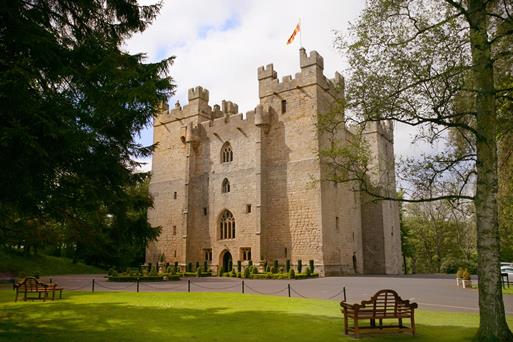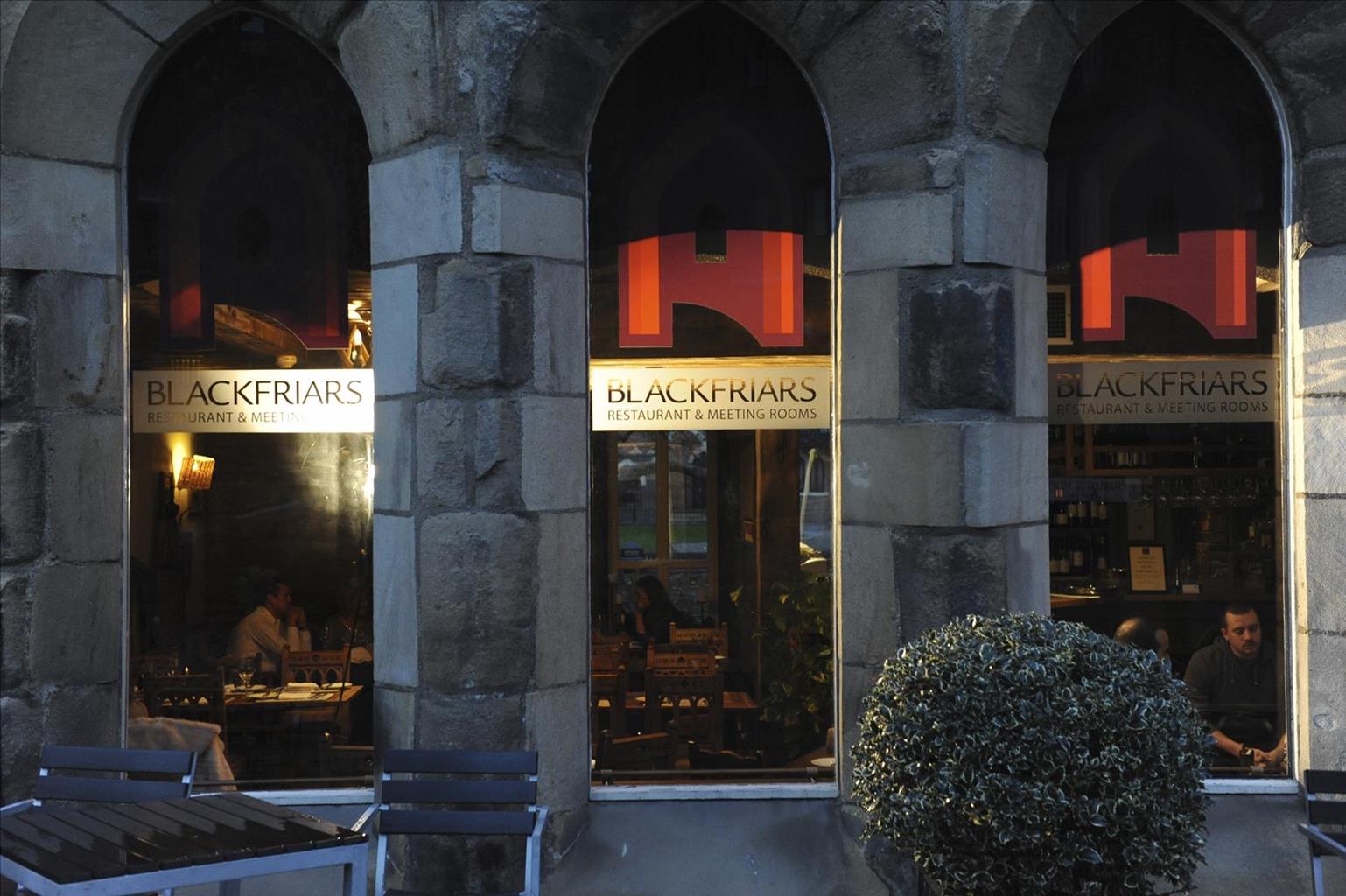April Cottage is in the heart of Corbridge, three miles from Hadrian’s Wall Trail, and the Roman…
Roman Corbridge

6.5 miles (10.4kms)
About the walk
Corbridge is a picturesque little town, with Georgian stone cottages, antique shops and old inns cuddled up to a square-towered church. Nothing much happens here these days: people come for a little peace and quiet away from the city and maybe a spot of Sunday lunch in one of those inns. The wide River Tyne flows by lazily on a journey that takes it from the wild hills of Northumberland, through the cityscapes of Newcastle and onwards to the shivering North Sea.
Roman settlement
Though the present town was founded in Saxon times, the Romans, under Agricola, first arrived in AD 79. They established their settlement six years later, just 0.5 miles (800m) to the west of modern Corbridge, on the north bank of the Tyne. Known as Corstopitum, it would have been the most northerly settlement in the Roman Empire, strategically placed at the junction of their Dere Street (which led from York to northern Britain) and Stanegate (from Corbridge to Carlisle) roads, and near to what was, after AD 122, the frontier: Hadrian’s Wall. The Romans had a fine bridge across the Tyne, and you can still see the remains of foundations when the water levels are low.
Defence against the Scots
In past centuries Corbridge was second only to Newcastle in this part of the world, and of great strategic importance. As such, the town has known many troubled times. Low Hall, at the eastern end of Main Street, has a fortified pele tower. These fortifications were added to defend against the Scots; both the marauding Border reivers, who came to rob and pillage, and the Scots armies, who came to destroy. William Wallace, Robert the Bruce and King David II all invaded and laid the town waste on their journeys south. Centrepiece of modern Corbridge is undoubtedly St Andrews Church, built in the Saxon era and with a Roman archway borrowed from the older settlement. The church was extensively modified in the 13th century, with the addition of aisles, transepts and chancel, and restored during Victorian times.
Round the back of the church you’ll come across another fortified house, this time the 13th-century Vicar’s Pele – even the clergy were not immune to the wrath of the Scots. Before going down to the River Tyne and that magnificent 17th-century bridge, the route passes Town Barns, where the famous northeast-based author Catherine Cookson lived in the 1970s. The route follows the riverbank now, before climbing out of the valley, traversing pastures scattered with woods, and leading along hedge-lined country lanes. You arrive at Prospect Hill, with its pristine cottages and farmhouses. It does indeed have prospects – a fine view of Corbridge, the Tyne Valley and the low hills beyond where the Romans marched and Hadrian’s Wall once offered a firm deterrent to those erring northerners.
Walk directions
Cross the bridge into town and turn right along Main Street to see Low Hall and Monk's Holme at the far end. Return to The Angel Inn and swing right up Princess Street. At the town hall, turn left into Hill Street. Bear left before the church, past the Vicar's Pele to the Market Place, and there go right and right again up Watling Street. At the top, wind left and right around The Wheatsheaf Hotel.
Higher up, turn left towards Corbridge Roman Site, then leave left along a track to West Green, passing Town Barns, where Catherine Cookson once lived. At the bottom go right past Orchard Vale, then swing left down to a lane.
Turn left, but then move right to join a riverside path back to Town Bridge. Over the bridge, bear left to a stone stile, crossing grass to continue along a wooded riverside path. Emerging onto a track by a cricket ground, go left along a flood embankment.
After almost 0.5 miles (800m), drop right to a ladder stile and carefully cross a railway line. The path beyond climbs into a wood, joining the right boundary to reach a field at the top. Follow the right hedge out to the A695. Walk right for 0.25 miles (400m).
Beyond a row of houses, turn off left along a lane towards Temperley Grange and Prospect Hill. Leave just after the first right-hand bend over a stile on the left and bear right, straight up the hill. Carry on over a second stile to another stile at the top and follow a short track out right to rejoin the lane. Continue uphill to a crossroads and go right. Follow the lane past a junction for 0.75 miles (1.2km).
Just past West Farm, by a pylon, turn through a gate on the right. Head away beside successive fields towards Snokoehill Plantation, a wall first on your left, then the right.
Through a gate, go left along the plantation's top edge. Swing right and drop through the wood, curving down within its lower fringe.
Emerging onto a grass track, go right. Where that turns into High Town Farm, keep ahead through a gate along the base of a field. Carry on through a hand gate beside another wood to join a lane and keep ahead.
After 0.25 miles (400m), cross a stile on the left and head downfield to the A695. Cross to continue in the field opposite. Go through a gate on the right partway down, and drop through a wood to the B6529. Go left over the railway to the roundabout by the car park.
Additional information
Village streets, riverside and farm paths and lanes, 10 stiles
Small town and low hills
Dogs should be on leads
AA Walker's Map 29 Hadrian's Wall
Long-stay car park beside B6321 on southern side of bridge
On Princess Street between Hill Street and Main Street
WALKING IN SAFETY
Read our tips to look after yourself and the environment when following this walk.
Find out more
Also in the area
About the area
Discover Northumberland
If it’s history you’re after, there’s heaps of it in Northumberland. On Hadrian’s Wall you can imagine scarlet-cloaked Roman legionaries keeping watch for painted Pictish warriors while cursing the English weather and dreaming of home. Desolate battlefield sites and hulking fortresses such as Alnwick, Dunstanburgh, Bamburgh and Warkworth are reminders that this, until not so very long ago, was a contested border region. The ruins of Lindisfarne bear witness to the region’s early Christian history.
Northumberland also has some of Britain’s best beaches. On summer days, and even in winter, you’ll see surfers and other brave souls making the most of the coast. Inland, there are some great walks and bike rides in the dales of the Cheviot Hills and the Simonsides – just hilly enough to be interesting, without being brutally steep. There's dramatic scenery in the High Pennines, where waterfalls plunge into deep valleys, and there are swathes of heather-scented moorland. Northumberland National Park covers over 400 square miles of moorland and valleys with clear streams and pretty, stone-built villages. It’s just the place for wildlife watching too. You’ll find flocks of puffins, guillemots and other seabirds around the Farne Islands, and seals and dolphins offshore.
Nearby stays
Restaurants and Pubs
Nearby experiences
Recommended things to do
Why choose Rated Trips?
Your trusted guide to rated places across the UK
The best coverage
Discover more than 15,000 professionally rated places to stay, eat and visit from across the UK and Ireland.
Quality assured
Choose a place to stay safe in the knowledge that it has been expertly assessed by trained assessors.
Plan your next trip
Search by location or the type of place you're visiting to find your next ideal holiday experience.
Travel inspiration
Read our articles, city guides and recommended things to do for inspiration. We're here to help you explore the UK.














